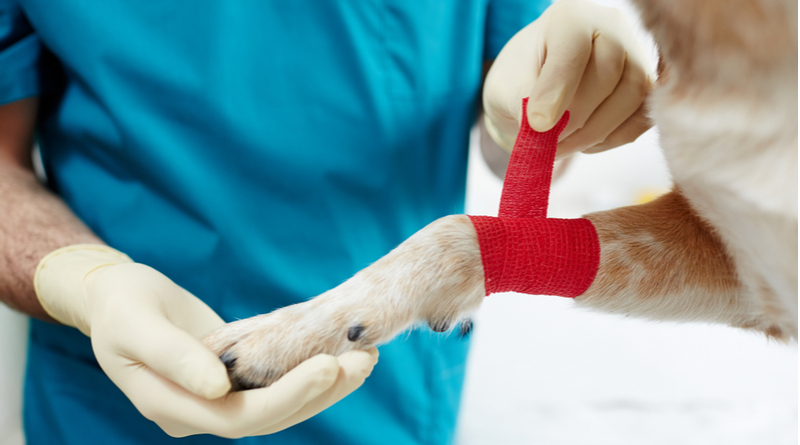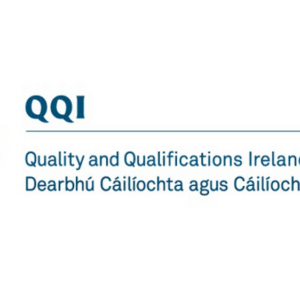What is Animal First Aid?
Animal First Aid is emergency care given immediately to an injured animal. The purpose of first aid is to minimize injury and future disability.
Animal First Aid aims to preserve life, reduce pain and suffering, prevent the situation from getting worse and promote recovery.
What 3rd level courses are available?
Universities and colleges in Ireland are offering Animal First Aid courses in the following subject areas:
- Diploma in Pet First Aid Practices – Cover fundamental topics such as: how to take control in a first aid situation, how to prioritize first aid situations, how to develop first aid techniques, and best practices. You’ll develop your excellent animal care technique, which you can use to put into practice in the workplace.
- Certificate in Animal First Aid: Level 3 – This comprehensive course will equip all pet lovers with the necessary skills, expertise, and confidence to assess if your pet requires emergency attention and then act before it is too late.
- Advanced Certificate in Animal First Aid – Level 3 – A comprehensive hands-on, practical course that will explore key topics such as common health issues in domestic pets, tips for pet owners when medicating pets, basic first aid for animals, routine health care for animals, and rehabilitation of domestic animals.
Studying Animal First Aid in college
Many Animal First Aid courses take place over 1 year to 4 years depending on the course and modules selected. There are also part-time courses and night courses available so you can be sure to fit in your studies no matter what your schedule is like.
Courses will cover theory work through lectures, assignments, tutorials, and taught modules. Assessments will take place continuously with written examinations and practical assignments combined to achieve a qualification.
You could also consider work experience or a work shadow in the industry. This could include spending several weeks in veterinary practice or involve additional animal-related work experience, for example working in a rescue center.
Securing this work experience will be challenging due to the popularity of veterinary careers; there is a lot of competition for work placements. You’ll need to allow time to source and complete your placement, and you should be prepared to approach several practices. Speaking directly to a veterinary nurse at the practice may be more successful than simply emailing your request.
Relevant work experience is a good way of demonstrating a genuine interest in the field and is regarded favorably by employers.
Work Experience will not only allow you to obtain a deeper knowledge and understanding of the industry, but it will also give you a chance to do some essential networking with other industry professionals and gain valuable contacts for the future.
Career options
After completing a course in Animal First Aid you will be able to get started in a career that uses specific knowledge of first aid and animal health care.
If you are interested in an Animal First Aid qualification for professional use, most positions are within veterinary practices, specialist employers who provide emergency care or specialize in referral cases or rescue centers, and animal charities. Outside of practice, there are other areas of employment including education, research, animal rehabilitation, and the armed forces.
As an animal first aider you may be involved in the hands-on nursing care of a range of animals, providing both emergency and routine healthcare. You could work alongside veterinary surgeons to promote animal health and welfare through responsible ownership and play a key role in the education of pet owners.
There are opportunities to develop your career and specialize depending on the practice that you work in and your interests. For example, within referral practice, you could specialize in a specific type of animal health care, e.g. anesthesia, rehabilitation, ward care, or diagnostics. Alongside the animal-related work, there are also options for you to progress and specialize in a managerial role such as a practice manager.
Outside of practice, you may choose to embark on a related career within education, such as teaching veterinary nurses or lecturing on animal management-related courses. There may also be research opportunities depending on your additional qualifications or opportunities arising within the pharmaceutical or nutritional industries.
Working hours will depend on whether you are employed by a company with set business hours or if you are contracted to various facilities or companies. The hours are usually full-time, Monday to Friday. However, you may work longer hours depending on your role. You should bear in mind that you may be required to work unsociable hours, including weekends, bank holidays, and possibly overnight cover.
Every day will bring different challenges but variety is one of the most enjoyable aspects of the role. The job is physically demanding. You’ll be on your feet for much of the day and will be involved in lifting and restraining animals.
As you’re required to be hands-on with a range of animals, bites and scratches are a potential risk. You may play a key role in supporting pet owners in making (sometimes difficult) decisions regarding their animal’s care and wellbeing.
Related jobs include:
- Academic researcher
- Animal nutritionist
- Animal physiotherapist
- Animal technician
- Nature conservation officer
- Zookeeper
- Zoologist
- Charity officer
- Ecologist
- Environmental consultant
- Field trials officer
- Research scientist (life sciences)
- Sales executive
- Science writer
- Veterinary nurse
- Volunteer coordinator
Further study
After completing a course in Animal First Aid you may choose to pursue further study in a specialist field to increase your knowledge base and skillset. Postgraduate study can also be used as a means to change career focus or to gain professional qualifications required to practice in certain career areas such as small animal or equine nursing or veterinary nursing education.
FAQ
What should your animal First Aid kit include?
Any animal first aid kit should include the following basic items:
· Bandages – a roll of self-adhesive or crepe bandage (5cm width)
· Conforming/open-weave bandages (2.5cm width)
· Some non-adhesive absorbent dressings (5cm x 5cm) to cover open wounds
· Surgical sticky tape
· A box of cotton wool
· A box of sterile absorbent gauze
· Blunt ended scissors, preferably curved
· A thick towel
· An Elizabethan collar
Where can I study Animal First Aid?
Explore your options here
Did You Know?
- Around 50% of orangutans have fractured bones, due to falling out of trees regularly.
- Petting a dog lowers blood pressure and reduces stress.
- The fingerprints of a koala are so indistinguishable from humans that they have on occasion been confused at a crime scene.
- Frogs cannot vomit. If one has to, then it will vomit its entire stomach.
- On average, a horse drinks up to 30-60 liters of water a day.
- Contrary to popular belief, you shouldn’t feed your cat a saucer of milk or any dairy products. While they may love the taste, most cats are lactose intolerant.












Comments